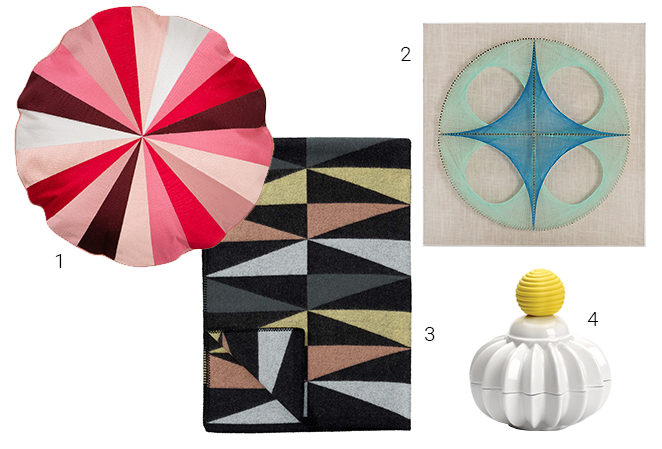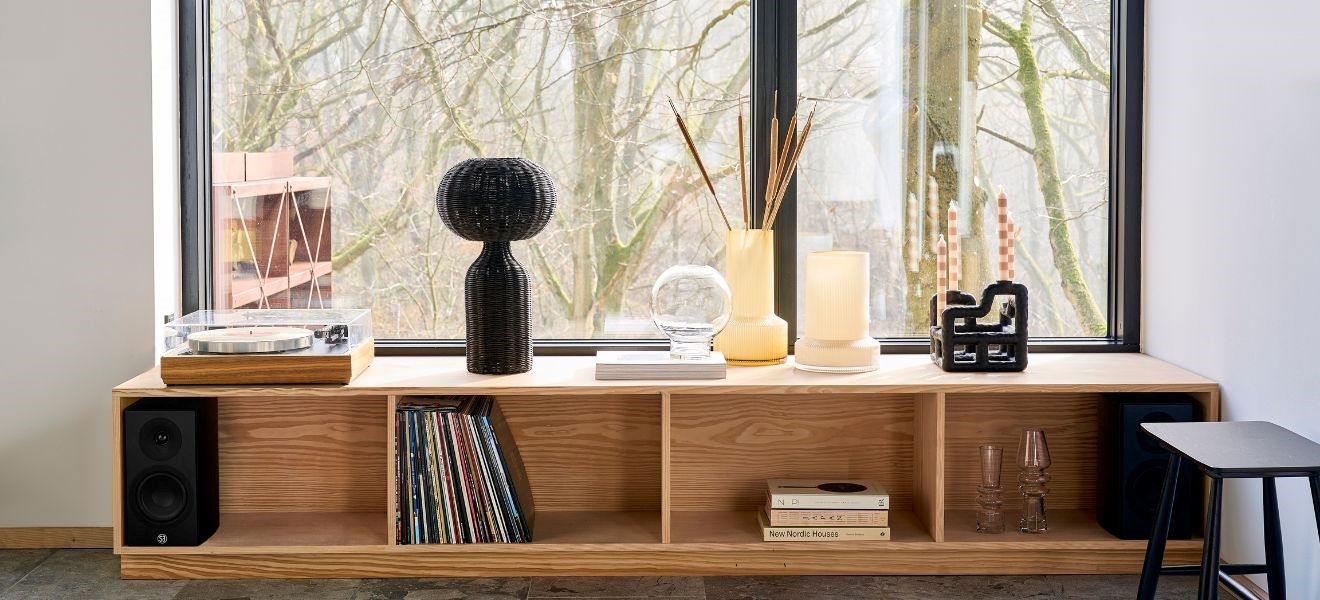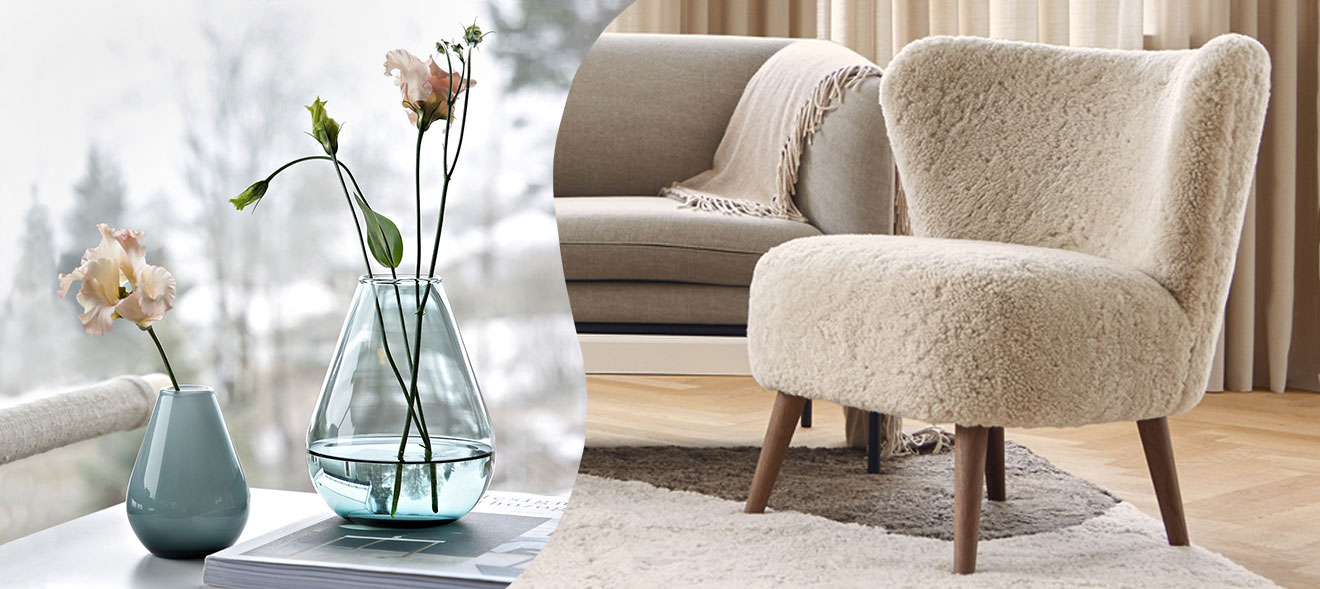The Freddy Mamani style is all about bright colours and bold shapes. This Bolivian’s architecture is now winning over the design world.
El Alto in Bolivia is not just the world’s highest city: its architecture is also vertiginous. The dizzyingly colourful buildings here are by bold master builder Freddy Mamani, who started off as a bricklayer and later studied structural engineering. He began his architectural career when a local businessman asked for something ‘unique’. Mamani built him a bright green house which looks like an old temple crossed with something from outer space. He founded the Neo-Andean style, with a spirit which has spread throughout the city. It resonates with international designers – from the yellow velvet cushion covers by Bungalow Denmark to the merino and lambswool throws by Klippan Yllefabrik. Over a hundred buildings in El Alto have now been created in true Freddy Mamani style.


A space as dressy as its occupants
The city is now known as the Vegas of the Andes, a reputation which it owes mostly to the great event venues that Mamani has built. He is known for his elaborate, layer-cake party halls – ‘salones de eventos’ – which provide grand, post-modern backdrops for weddings, birthdays and other celebrations. El Alto is famous for parties and its carnival to begin with, and people really dress up. Mamani says: “I thought it would be nice to have an equally impressive indoor space for these parties.” Brightly coloured stripes stack up on columns supporting heavily moulded ceilings, which are in turn decorated with magnificent chandeliers and LEDs. Mirror-clad mezzanines reflect this dream world back into infinity. Each party palace is wilder and more artistic than the next.

Many references in the Freddy Mamani style hark back to a very ancient architecture which once graced the nearby imperial capital Tiwanaku. The rulers of this city controlled most of the southern Andes many centuries ago. Mamani explains: “I wanted to rescue these lines and motifs from Tiwanaku and imbue contemporary architecture with ancient forms.” In friezes adorning many of his buildings, he uses not only geometric shapes but also depictions of condors, pumas and other natural forms, combined with figurative organic elements such as mountains, lightning and flowers. Mamani’s style has proved a hit internationally, especially in these days of playful interiors. People love his space-age melting pot of ancient symbolism and pop art. Some designer items like this oversized diamond mirror by Reflections Copenhagen, the striking red and green dish from 3D Glassware or ‘The Flame’, a light fitting by Embassy Interiors, look like they would fit perfectly in one of Mamani’s creations.

Pinball wizard
Mamani’s vital, colourful worlds are reminiscent of works by Congolese artist Bodys Isek Kingilez, whose work investigates the possibility of living in a harmonious future society. These creations are fantastic, utopian models which draw on a wide range of everyday materials and found objects – including coloured paper, plastic, soda cans and bottle tops. Both Mamani’s and Kingilez’s work use striking palettes of reds, pinks, blues and greens, as if an army of building-sized arcade machines had taken over the city. At the same time, the Freddy Mamani style and its dream worlds also fit with the current 1970s revival. This style can be seen in the psychedelic glass sculptures Henryk Rysz designed for Sabina Glass, or the luminaire by Mauro Ferretti.



El Alto is a real melting pot of the modern and the traditional. Ever since completing his first major work in 2005, Freddy Mamani has influenced the city’s urban aesthetic. Once the poorest city in Bolivia, today it is one of the country’s fastest growing urban areas. Aguayo, a type of colourful cloth woven by Manani’s own indigenous group the Aymara people, has proved a major source of inspiration for his kaleidoscopic work. Aguayo cloth is full of complementary contrasting colours: pink and green, purple and yellow, with zigzag patterns throughout. Mamani splashes these same colours generously onto the façades of buildings. “My designs are a modern expression of our culture”, says this master builder, who confounded his critics by completing a degree in construction after he’d designed over a hundred buildings. Mamani’s look always has something energetic and playful about it, which is also reflected in contemporary design pieces like this bright red decanter by Spring Copenhagen, the yellow wine glass from LSA International, or the patterned trivet by NAV Scandinavia. Like most elements in Mamani’s buildings, these objects are also handmade.
Freddy Mamani Style: Art Deco echoes and Mediterranean style
Iterations of Mamani’s joyous style have now spread the world over – even as far as Amsterdam. La Cervecería Bar in the east of the city was designed by Studio Modijefsky and is reminiscent of the Bolivian designer’s work. Its surreal graphic look sees the area behind the bar decorated with lightboxes, mirrors and green tiles in a sort of triptych. Being a typical ‘cervecería’, this is a meeting point for friends and colleagues to have a drink after work. If you are aiming to blend in here, among the yellow panels, red steel and blue textiles, you might need shoes by Hester van Eeghen or earrings by Paula Bolton.


Echoes of Art Deco – expressive symmetry, interlocking squares and aerodynamic curves – can also be found in the Freddy Mamani style. It’s hardly surprising that the lifeguard tower in that Art Deco hotbed, Miami Beach, looks like it was taken from El Alto and shipped to Florida for reassembly, with its abstract roof line, contours, colours and materials. The architect William Lane designed most of these – initially in 1995 as replacements for towers destroyed by Hurricane Andrew. They came to symbolise the new life breathed into South Beach culture and society as it recovered. Some 20 years later, William Lane’s studio was tasked with designing a further six prototypes to house lifeguards on the beach. It is very fitting that, like Mamani’s designs, these literally life-saving beach huts exude joie de vivre.

Title: House in El Alto, Bolivia, © Mattia Polisena









